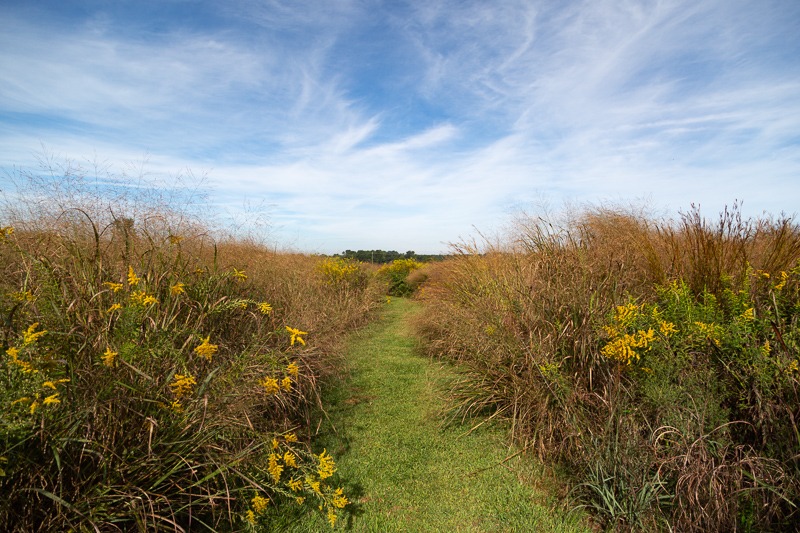
Prairie Ridge Ecostation consists of about 45 acres of land that has transitioned from grassy fields to WWI training grounds to prison farm to NC State University cow pasture. NCMNS acquired the property in the late 1990s, and constructed a wet laboratory for Museum researchers on the site. Mary Ann Brittain saw the potential of the remainder of the land as a space for outdoor education, and in 2004, Prairie Ridge Ecostation was born. Since then, the land has been transformed into a variety of habitats including prairie grassland, bottomland forest, pond and stream
Piedmont Prairie
As early as 1540, explorers reported “savannas” in the Carolina Piedmont. These open expanses were probably the result of lightning fires, or of fires set by indigenous communities to clear land for planting. Grazing animals such as elk and bison may have also helped maintain the prairies. As indigenous populations declined, so did the prairies.
Remnant prairies are all that are left in North Carolina. Our prairie was established intentionally, constructing the ecosystem based on our knowledge of historical practices and prairies still found in the region. Through the inclusion of native species such as big bluestem (Andropogon gerardii) and black-eyed Susan (Rudbeckia hirta), and the adoption of historical management practices such as prescribed fires, Prairie Ridge has developed new space for native plants and wildlife to thrive.
Nature Neighborhood Garden
North Carolina is home to many species of native plants, many of which can be great additions to your garden and attract wildlife to your yard. Our Nature Neighborhood Garden features many of these plants and demonstrates how you can build a native plant garden that is at once beautiful, interesting across seasons, and attractive to a wide variety of wildlife. Visit our Nature Neighborhood Garden page for more information about this great resource
Jesse P. Perry Arboretum
Discover our arboretum of native trees, created by and named for retired Museum educator Jesse Perry. The project began in 2004 when Museum staff and volunteers planted 56 trees to restore our forested wetlands habitat. The arboretum features breeding pairs of nearly every tree species native to North Carolina, from the mountains to the sea. Some species, such as bald cypress, oaks and hickories, are fairly well known, while others, such as water tupelo, pumpkin ash and parsley-leaf hawthorn, are less familiar. You'll find the trees arranged by region with species name labels along the lowlands bordering the creek, with the coastal trees located closest to Edwards Mill Road and the mountain trees closest to the Nature PlaySpace.

